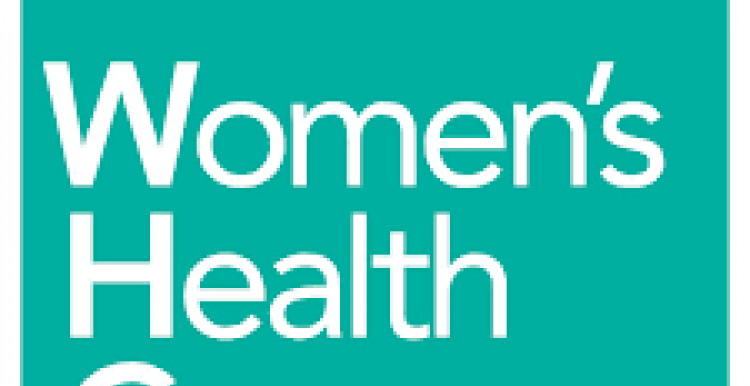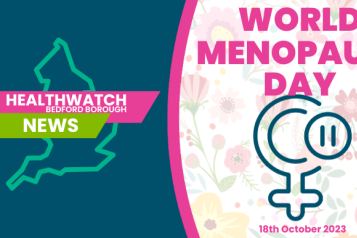Women's Health Concern (WHC) - The Menopause

‘The change’, ‘the climacteric’, ‘the time of life’ – call it what you will, it is an unavoidable fact that all women go through the menopause. However, for many women this natural process is a time of anxiety and distress due to the various symptoms that can accompany it. Some menopausal changes can also be brought about by treatments for cancer, including chemotherapy, ovarian ablation and hormone therapy. Whatever their cause, this fact sheet aims to explain just what these changes are, and what you can do to make things easier.
What is the menopause?
The menopause refers to that time in every woman’s life when her periods stop and her ovaries lose their reproductive function. Usually, this occurs between the ages of 45 and 55, but in a few exceptional cases women may become menopausal in their 30s, or even younger. This is then known as a premature menopause, or premature ovarian insufficiency.
The menopause is influenced by hormones – or more correctly, by a change in hormone levels. During a woman’s fertile years, her ability to produce an egg each month is associated with the release of three reproductive hormones (oestradiol, oestrone and oestriol), that are referred to collectively as oestrogen. Oestrogen is mainly produced by the ovaries, though small amounts are also made by the adrenal glands and by the placenta of a pregnant woman.
It is oestrogen which stimulates female characteristics at puberty and controls a woman’s reproductive cycle: the development and release of an egg each month (ovulation) for implantation in the uterus (womb), and the way in which the lining of the womb thickens to accept a fertilized egg. The monthly period happens because no implantation has taken place – there is no pregnancy – and the lining of the womb is shed.
As women get older, their store of eggs in the ovary decreases and their ability to conceive diminishes. At this time, less oestrogen is produced, causing the body to behave differently. However the body does not stop producing oestrogen over night, and the process can even take several years, during which symptoms arise gradually. This gradual change is called the ‘peri-menopause’.
At around the age of 50-55 years, the monthly cycle stops completely – so no more ovulations, no more periods and no more pregnancies. This is the menopause.
What happens and how does it feel?
For some women this loss of reproductive ability may be deeply felt, and for all women the menopause is a personal experience, not just a medical condition. However, the diminishing release of oestrogen from the ovary as women advance into their 40s is often the cause of symptoms which can be distressing and may need medical attention.
Hot flushes are the most common symptom of the menopause, occurring in three in every four menopausal women. Other common symptoms include night sweats, sleeplessness, vaginal dryness, irritated skin, more frequent urinary incontinence and urinary tract infections, low mood and a reduced interest in sex. Symptoms vary hugely in duration, severity and what impact they have on women.
All the common symptoms of the menopause are associated with a decrease in the body’s production of oestrogen. Oestrogen lack can affect many parts of the body, including the brain, causing changes in emotional well-being, and the skin, influencing its elasticity and thickness.
Once the ovaries have ceased their production of oestrogen, other changes take place which may have more of an effect on long-term health. Most commonly these changes affect the strength and density of bones, increasing the risk of the bone-thinning disease called osteoporosis. The bones of the female skeleton depend on oestrogen to maintain their strength and resistance to fracture. However, while hot flush or vaginal dryness are obvious, there are no obvious symptoms of Osteoporosis – the first sign is usually the fracture of a bone. It’s for this reason that osteoporosis has been called “the silent epidemic”.
There is also some evidence that oestrogen deficiency is the cause of some chemical changes in the body which make women after the menopause especially vulnerable to heart disease and stroke.
Confirming that the menopause has taken place
It’s not always easy to confirm that the menopause has actually happened. Of course, irregular periods and the occasional hot flush are a sign that changes are taking place, but identifying the time of the actual menopause is not so simple, especially if you are taking the Pill or have started Hormone Replacement Therapy (HRT) for the relief of peri-menopausal symptoms.
The question may seem irrelevant, but it is helpful to know the date of your last period, not only so that you can respond to symptoms in the most appropriate way, but also for contraceptive purposes. A truly menopausal woman will be infertile and will have no need of contraception. However, most doctors advise menopausal women under 50 to continue with their contraception for two years after their last period and for one year if they are over 50.
Most doctors will evaluate a woman’s menopausal status according to her symptoms (hot flushes, for example), pattern of periods, and medical record. It is possible to take a blood test to measure levels of a reproductive hormone known as FSH. However, while elevated FSH levels may be a sign of the menopause, the test is not always accurate and results can’t be guaranteed. Measurement of FSH is not required to diagnose perimenopause or menopause in women aged over 45 years.
Some women by the age of 50 may have had a hysterectomy and, at the same time, surgical removal of the ovaries for various medical reasons. Removal of the ovaries will, of course, create an immediate menopause, whatever the patient’s age, and all the symptoms and risks associated with a natural menopause will apply to these women.
This is also the case in those rare instances of premature ovarian Insufficiency, when the hormonal system fails at an early age and the ovaries lose their normal function.
What can be done?
Lifestyle factors
A healthy lifestyle can minimize the effects of the menopause, helping to keep the heart and bones strong. Many women feel that this is a good time to review the way they treat their body. Here are some tips to consider:
Complementary & alternative therapies
These have become a popular choice and many women use them, although limited scientific research has been done to support their effect or indeed their safety. They may sometimes help with troublesome symptoms, but they are unlikely to have a significant impact on bone strength, the heart or blood vessels.
Choosing a complementary or alternative therapy can be a challenge; so many different ones exist. Acupuncture, aromatherapy, herbal treatments, homeopathy, hypnotherapy, yoga and reflexology have all been reported as being helpful in the menopause.
To find out more about available therapies, please consult the WHC fact sheet Complementary/alternative therapies for menopausal women.
Hormone Replacement Therapy
Hormone replacement therapy (HRT) is the most effective and widely used treatment for menopausal symptoms. As its name suggests, it is simply a way of replacing the hormone oestrogen that is lost during the menopause.
HRT aims to relieve those symptoms related to oestrogen deficiency – such as hot flushes, vaginal dryness, and osteoporosis. The benefits of HRT as a remedy for hot flushes, sleep disturbances, vaginal symptoms and some mood disorders have been proved. On the other hand, some women experience unwanted side effects when taking HRT for the first time, such as breast tenderness, leg cramps, nausea, bloating, irritability and depression. Usually these symptoms resolve after a few months, but change in type, dose (Oral: tablet; transdermal: patch or gel) or route of HRT may be required.
Concerns have been raised that HRT may increase the risk of breast cancer, ovarian cancer, and even heart disease – and for this reason there has been much debate in recent years over HRT’s long-term safety. You can find out more about this discussion, and about the various types of HRT and their differences, in our fact sheet on HRT: Benefits and risks.
Conclusions
Women experience the menopause in widely varying ways. It may help to remember that it is not unusual to feel that your body is changing dramatically, or equally, that it has hardly changed at all.
Some women breeze through a problem-free menopause, but most experience some symptoms ranging from mild to severe. If you feel that you are struggling, advice and support is widely available. The important thing is to be aware of any changes and to consult your GP for advice. Whatever the symptoms, help is available in a range of ways.
Above all, bear in mind that your health is your responsibility and that you are in charge. This is a time when your body deserves some tender loving care.
For more information about women's health, please click here
